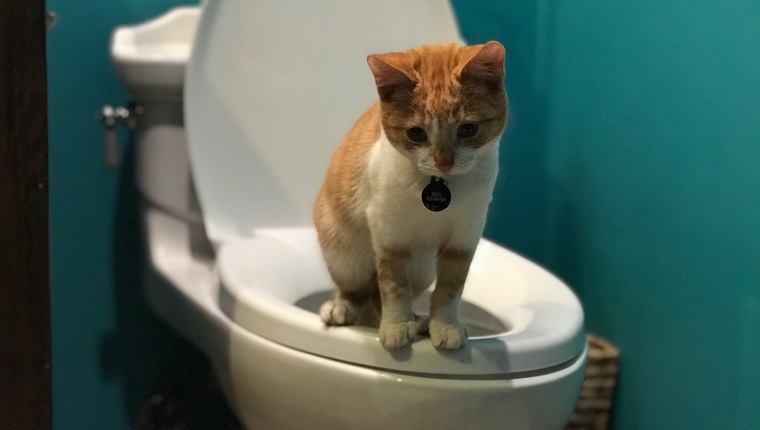Dangers of Flushing Cat Poop in Your Toilet - Preventive Steps
Dangers of Flushing Cat Poop in Your Toilet - Preventive Steps
Blog Article
The publisher is making several good observations about Can You Flush Cat Poo or Litter Down the Toilet? as a whole in this content directly below.

Intro
As pet cat proprietors, it's necessary to be mindful of exactly how we deal with our feline good friends' waste. While it might appear convenient to flush cat poop down the commode, this technique can have destructive effects for both the setting and human health and wellness.
Alternatives to Flushing
The good news is, there are much safer and a lot more accountable methods to deal with cat poop. Consider the adhering to options:
1. Scoop and Dispose in Trash
One of the most usual approach of getting rid of cat poop is to scoop it right into a naturally degradable bag and throw it in the garbage. Make sure to make use of a committed trash inside story and dispose of the waste without delay.
2. Usage Biodegradable Litter
Choose naturally degradable pet cat litter made from materials such as corn or wheat. These trashes are eco-friendly and can be safely taken care of in the garbage.
3. Bury in the Yard
If you have a backyard, think about burying cat waste in a designated area far from veggie gardens and water sources. Be sure to dig deep enough to stop contamination of groundwater.
4. Mount a Pet Waste Disposal System
Buy a family pet waste disposal system particularly designed for feline waste. These systems use enzymes to break down the waste, lowering odor and ecological effect.
Health Risks
Along with environmental problems, flushing feline waste can additionally position wellness risks to people. Pet cat feces may have Toxoplasma gondii, a parasite that can trigger toxoplasmosis-- a possibly extreme health problem, particularly for pregnant women and people with weakened body immune systems.
Environmental Impact
Flushing pet cat poop introduces damaging virus and parasites into the water, posturing a substantial threat to water environments. These pollutants can negatively influence aquatic life and compromise water top quality.
Conclusion
Responsible animal possession extends beyond supplying food and sanctuary-- it additionally entails correct waste management. By avoiding purging cat poop down the commode and opting for different disposal methods, we can minimize our environmental impact and shield human wellness.
Why Can’t I Flush Cat Poop?
It Spreads a Parasite
Cats are frequently infected with a parasite called toxoplasma gondii. The parasite causes an infection called toxoplasmosis. It is usually harmless to cats. The parasite only uses cat poop as a host for its eggs. Otherwise, the cat’s immune system usually keeps the infection at low enough levels to maintain its own health. But it does not stop the develop of eggs. These eggs are tiny and surprisingly tough. They may survive for a year before they begin to grow. But that’s the problem.
Our wastewater system is not designed to deal with toxoplasmosis eggs. Instead, most eggs will flush from your toilet into sewers and wastewater management plants. After the sewage is treated for many other harmful things in it, it is typically released into local rivers, lakes, or oceans. Here, the toxoplasmosis eggs can find new hosts, including starfish, crabs, otters, and many other wildlife. For many, this is a significant risk to their health. Toxoplasmosis can also end up infecting water sources that are important for agriculture, which means our deer, pigs, and sheep can get infected too.
Is There Risk to Humans?
There can be a risk to human life from flushing cat poop down the toilet. If you do so, the parasites from your cat’s poop can end up in shellfish, game animals, or livestock. If this meat is then served raw or undercooked, the people who eat it can get sick.
In fact, according to the CDC, 40 million people in the United States are infected with toxoplasma gondii. They get it from exposure to infected seafood, or from some kind of cat poop contamination, like drinking from a stream that is contaminated or touching anything that has come into contact with cat poop. That includes just cleaning a cat litter box.
Most people who get infected with these parasites will not develop any symptoms. However, for pregnant women or for those with compromised immune systems, the parasite can cause severe health problems.
How to Handle Cat Poop
The best way to handle cat poop is actually to clean the box more often. The eggs that the parasite sheds will not become active until one to five days after the cat poops. That means that if you clean daily, you’re much less likely to come into direct contact with infectious eggs.
That said, always dispose of cat poop in the garbage and not down the toilet. Wash your hands before and after you clean the litter box, and bring the bag of poop right outside to your garbage bins.
https://trenchlesssolutionsusa.com/why-cant-i-flush-cat-poop/

We hope you liked our section on Don’t flush cat feces down the toilet. Thanks a lot for taking a few minutes to read our article post. Sharing is nice. You just don't know, you might be doing someone a favor. Thanks for going through it.
See Availability Report this page